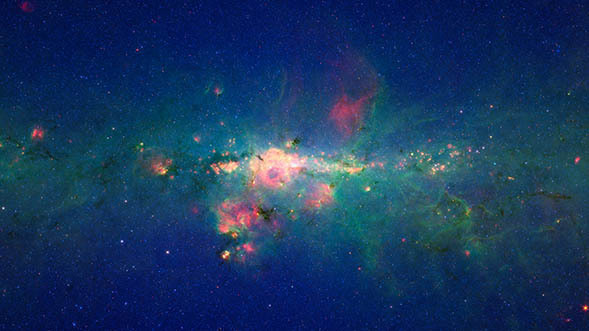Fast Facts

The Spitzer Space Telescope was a space-borne, cryogenically-cooled infrared observatory capable of studying objects ranging from our Solar System to the distant reaches of the Universe. Spitzer was the final element in NASA's Great Observatories Program, and an important scientific and technical cornerstone of the Astronomical Search for Origins Program.
Acronyms List (pdf)
| Launch Date: | 25 August 2003 |
| Launch Vehicle/Site: | Delta 7920H ELV / Cape Canaveral, Florida |
| Lifetime: | Requirement of 2.5 years (minimum); 5+ years (goal at launch); operated until decommissioned on Jan 30, 2020 |
| Orbit: | Earth-trailing, Heliocentric |
| Wavelength Coverage: | 3 - 180 microns |
| Telescope: | 85 cm diameter (33.5 inches), f/12 lightweight Beryllium, cooled to 5.6 K during the cold mission phase |
| Diffraction Limit: | 1.5 arcseconds at 6.5 microns |
| Science Capabilities: | Imaging / Photometry, 3-180 microns Spectroscopy, 5-40 microns Spectrophotometry, 50-100 microns |
| Planetary Tracking: | 1 arcsec / sec |
| Cryogen / Volume: | Liquid Helium / 360 liters (95 Gallons) |
| Launch Mass: | 950 kg (2094 lb) [Observatory: 851.5 kg, Cover: 6.0 kg, Helium: 50.4 kg, Nitrogen Propellant: 15.6 kg] |



